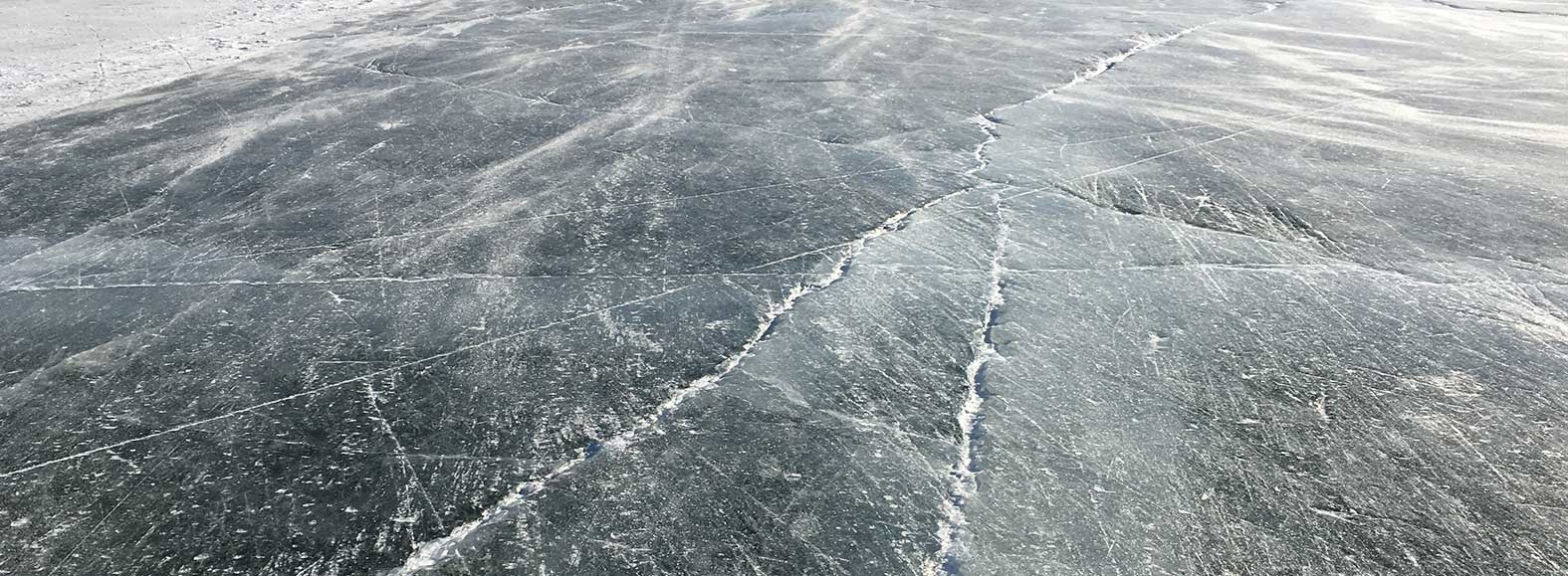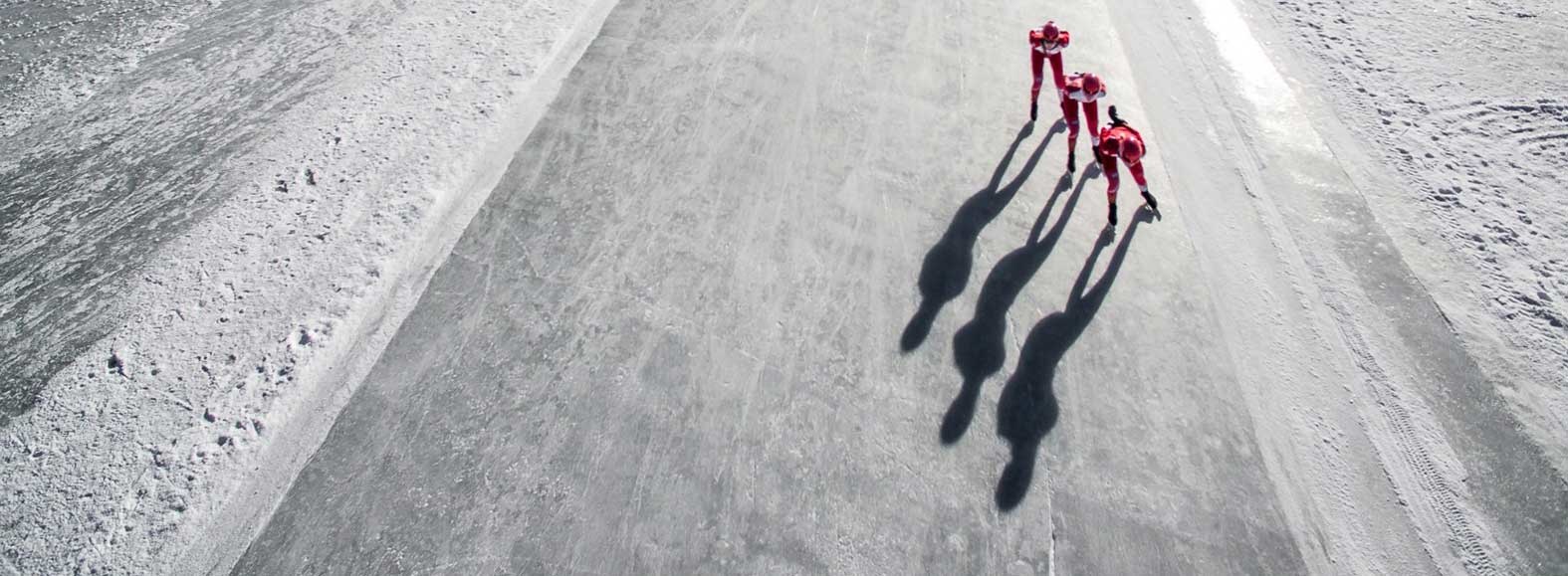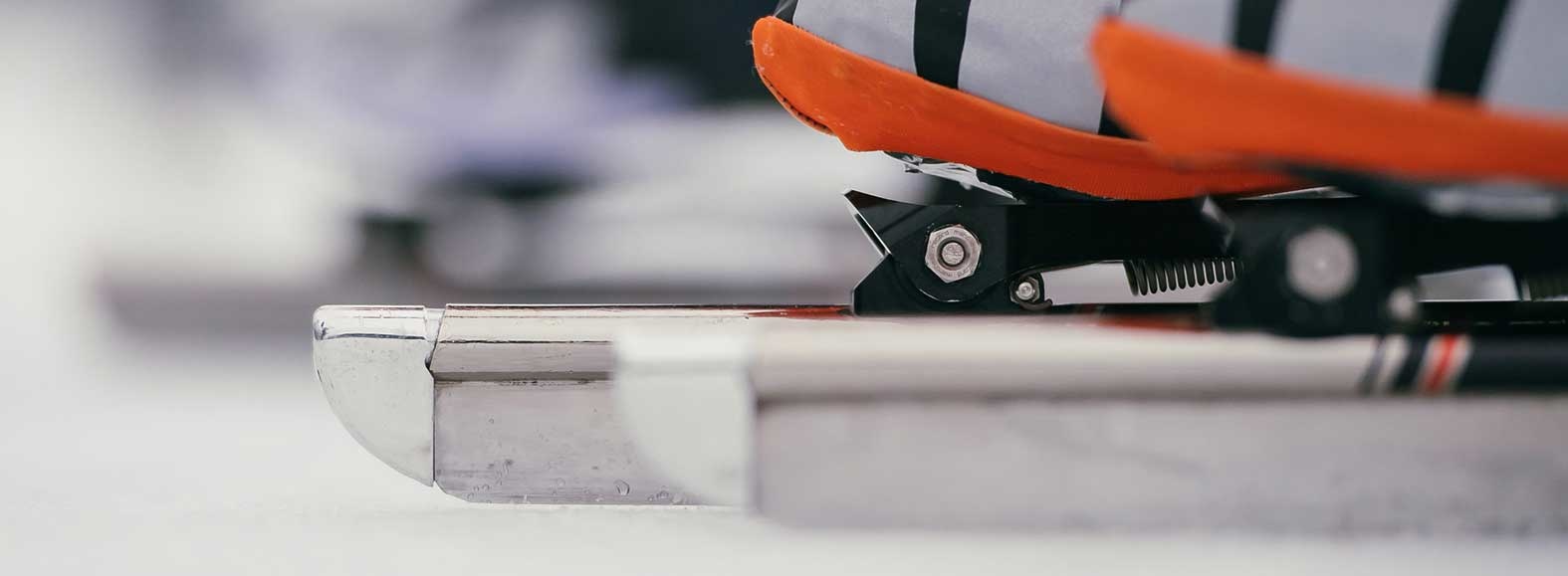Is it a good idea to take your brand-new clap skates onto natural ice? Some people think it is not such a smart one. "The clap mechanism is fragile", "you might fall more often", "you can only do it when you have great technical skills": those are the most common misconceptions about using your clap skates on natural ice.
According to us, it actually is a great idea. There are lots of pros about using your clap skates on natural ice. They will make skating on natural ice easier, and you will enjoy it all the more. How does it work? Read all about it here.
No scratching with the tip of the blade
Your push-off on a clap skate is more natural than on your traditional skates, which makes it easier to skate. With clap skates, you can stretch out your ankle for a relaxed and purposeful stroke. This extension of the ankle, a typical motion on clap skates, is a unique interaction of the joints in your leg, of your hip, knee, and ankle, that is made possible, amongst other parameters, by your muscles that are connecting everything – like the calf muscle that connects the knee and the ankle, which participates in the extension of your ankle. Thanks to this movement, you can keep gliding. The tip of your blade does not carve into the ice and it won’t slow you down. The benefits? You can keep skating for longer periods without getting tired. And, just like that, even longer skate tours of sixty kilometers and more are within reach.

Picture 1: Muscular skeleton model of Han Houdijk ‘Shifting Gears in Speed Skating’ (2001)

Picture 2: Natural ice has often deep cracks
But there are more pros! And to present them to you, we have to go back on the misconceptions and debunk them. True or false? Are you more likely to fall when you skate on clap skates? Do you have to work for years on your technical skills before you can take your clap skates out for a ride on natural ice? We have fact-checked the misconceptions for you here.

Picture 3: A marathon skater gets up after a fall due to a crack in the ice
True or false: on clap skates you’re more likely to fall
☐ True
☒ False
On clap skates, since you can’t push off with the tip of your skate, you’re not likely to get your tip stuck a crack. It doesn’t mean that your skates will never get caught in a crack, because that is unfortunately part of the game. But if it does happen, the chances you’ll fall will be significantly lessen. On clap skates, you have a little bit more time to recover and find your bearings. The skate will hinge first, so that you might stumble but you most likely won’t fall.

Picture 4: Marathon skaters on natural ice in Lulea, Sweden.
True or false: clap skates are only for skilled athletes
☐ True
☒ False
This is a statement made by old-school trainers who are convinced it is true. It is often the same coaches that say you should not be inline-skating in summer. They think you’ll master the lateral push-off better with a traditional skate and that if you don’t have a correct push-off on traditional skates, you will stick the tip in the ice. With a clap skate, that is impossible. If you push off too much with the tip of your blade because you lean in too much, the clap skate hinge will open and you will lose pressure and grip. This will force you to switch your weight more to your heels. Once your weight is on the back of your blade, your push will automatically go more to the side. Bonus: when your weight is at the back of your blade, you skate over ice cracks more easily.
True or false: the mechanism of a clap skate is not strong enough for natural ice
☐ True
☒ False
When you skate on natural ice, blades are usually the main cause for problems. Blades are made of hard steel, and will remain sharp for a long time. On natural ice, which can be blown over by debris, this is a huge advantage. But during extremely cold periods, the steel can become brittle, and when your blade gets caught in a crack, it may break. But that’s a problem you can experience both on clap and traditional skates.
Broken springs are, unfortunately, another common problem, and this one is specifically related to clap skates. It is caused by the same stressing factor as for the blades: cold. Indeed, cold makes steel springs brittle, and because of metal fatigue caused by the constant motion, the metal may break. Most of the clap skates nowadays have two springs, so at least you can continue to skate.

Picture 5: Cádomotus clap skate on natural ice
In conclusion, we can say that clap skates, compared to traditional skates, only have benefits when you use them on natural ice. Your skills will improve, your weight will shift to the back of your feet which makes it easier to deal with cracks, and your blade tips won’t get caught in them. And as for the clap mechanisms? Those are very solid nowadays, you can trust us on that.

 Triathlon
Triathlon
 Outlet!
Outlet!
 CádoWiki
CádoWiki
 About Us
About Us









